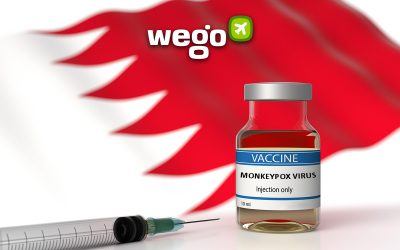This article has been reviewed by Wego’s editorial team to ensure that the content is up to date & accurate.
Updated 2 August 2022
The World Health Organization (WHO) has recently declared the spread of Monkeypox a ‘global health emergency’ amid the rising infection rates worldwide. Unfortunately, Qatar reported its first case of Monkeypox in July. Below, we have gathered all the information that you need about the restrictions on Monkeypox in Qatar. Read further to find out.
Table of Contents
What is Monkeypox?
Monkeypox is a viral zoonotic disease that occurs primarily in tropical rainforest areas of Central and West Africa and is occasionally exported to other regions.
In most cases, people typically recover within two to four weeks without needing to be hospitalized. In some cases, however, monkeypox can also be fatal in up to 6 per cent of cases and could also be more severe in children.
Monkeypox cases in Qatar
The Qatari Ministry of Public Health announced the first case of Monkeypox in Qatar on 22nd July 2022, making Qatar the third country in the Gulf peninsula with Monkeypox cases.
According to the ministry’s website, the infected individual is a visitor returning from abroad. He has been isolated and is receiving the appropriate medical care in accordance with the national protocol for handling cases of the disease that have been officially verified or are under investigation.
Monkeypox news in Qatar
For questions and enquiries related to monkeypox, individuals can call the health sector of health sector support line on 16000, available 24/7/.
Any people who have been in close contact with the confirmed case have been located, and they are being observed over the next 21 days to see if the symptoms of monkeypox worsen.
The MOPH additionally stated that all preventive measures required for the early identification of probable cases of monkeypox had been completed. National laboratories now have the ability to detect and diagnose the disease, and new rules and management recommendations have been established.
In order to ensure that the healthcare sector is ready and able to tightly control any potential developments, MOPH is closely monitoring the global and regional epidemiological situation in conjunction with the World Health Organization (WHO). In the statement, MOPH also advised the community members to follow the health preventive warning, particularly when travelling.
What causes Monkeypox?
Monkeypox is transmitted from one person to another by close contact with lesions, body fluids, respiratory droplets and contaminated materials such as clothing, bedding, or other items used in healthcare settings.
Monkeypox symptoms
Monkeypox has an incubation period of seven to 14 days. The initial symptoms of monkeypox are similar to influenza with fever, chills, exhaustion, headache, muscle weakness and swelling in lymph nodes.
The widespread of rashes all over the infected bodies include the inside of the mouth, palms of the hands, and feet. Moreover, it has been reported that the rashes are mostly in the genital area for the early stages of the illness.
The most distinguished ways of transmission of the Monkeypox infection from one person to another are typically through contact with body fluids and respiratory droplets, contact with skin lesions of an infected person and contact with contaminated surfaces.
What is the treatment for Monkeypox?
According to the Centers for Disease Control and Prevention (CDC), USA, there are no treatments specifically for monkeypox virus infections. However, monkeypox and smallpox viruses are genetically similar, which means that antiviral drugs and vaccines developed to protect against smallpox may be used to prevent and treat monkeypox virus infections.
Antivirals, such as tecovirimat (TPOXX), may be recommended for people who are more likely to get severely ill, like patients with weakened immune systems.
Monkeypox prevention
Here are the things that you can do to prevent the spread of Monkeypox:
- Keep your hands clean by washing them for at least 20 seconds with soap and water or alcohol-based hand sanitisers
- Prevent animal-to-human transmission
- Avoid any contact with wild animals
- Cook meat properly
- Avoid any objects that have been in contact with a sick animal
- Prevent human-to-human transmission
- Avoid contact with any person who has a rash
- Avoid contact with any object that has been in contact with a sick person













